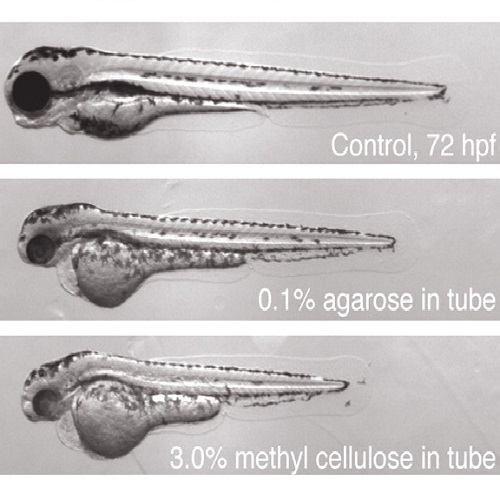Multilayer mounting enables long-term imaging of zebrafish development in a light sheet microscope.
Light sheet microscopy techniques, such as selective plane illumination microscopy (SPIM), are ideally suited for time-lapse imaging of developmental processes lasting several hours to a few days. The success of this promising technology has mainly been limited by the lack of suitable techniques for mounting fragile samples. Embedding zebrafish embryos in agarose, which is common in conventional confocal microscopy, has resulted in severe growth defects and unreliable results. In this study, we systematically quantified the viability and mobility of zebrafish embryos mounted under more suitable conditions. We found that tubes made of fluorinated ethylene propylene (FEP) filled with low concentrations of agarose or methylcellulose provided an optimal balance between sufficient confinement of the living embryo in a physiological environment over 3 days and optical clarity suitable for fluorescence imaging. We also compared the effect of different concentrations of Tricaine on the development of zebrafish and provide guidelines for its optimal use depending on the application. Our results will make light sheet microscopy techniques applicable to more fields of developmental biology, in particular the multiview long-term imaging of zebrafish embryos and other small organisms. Furthermore, the refinement of sample preparation for in toto and in vivo imaging will promote other emerging optical imaging techniques, such as optical projection tomography (OPT).

- Development 2012 Sep;139(17):3242-7
- 2012
- Imaging Technologies Development
- 22872089
- PubMed
Enabled by:
